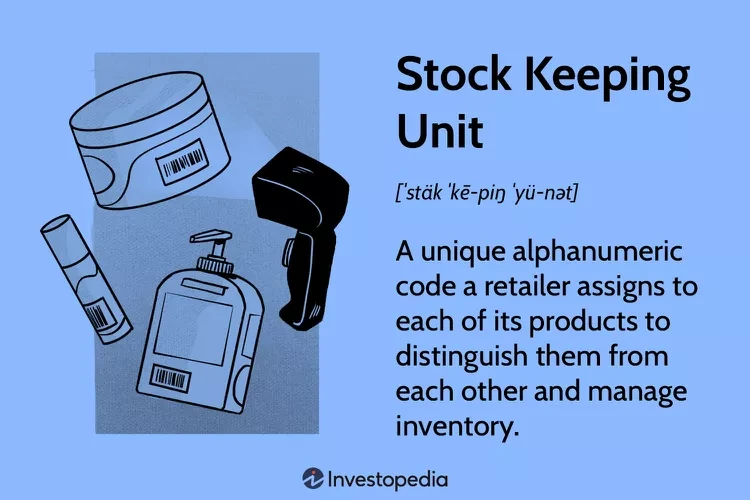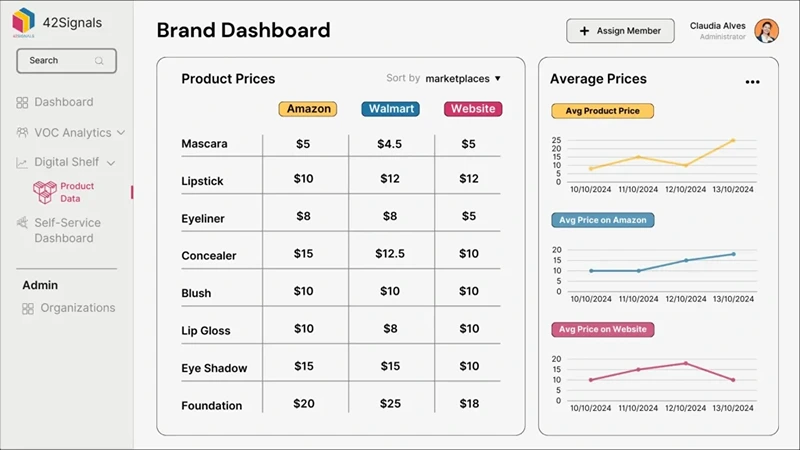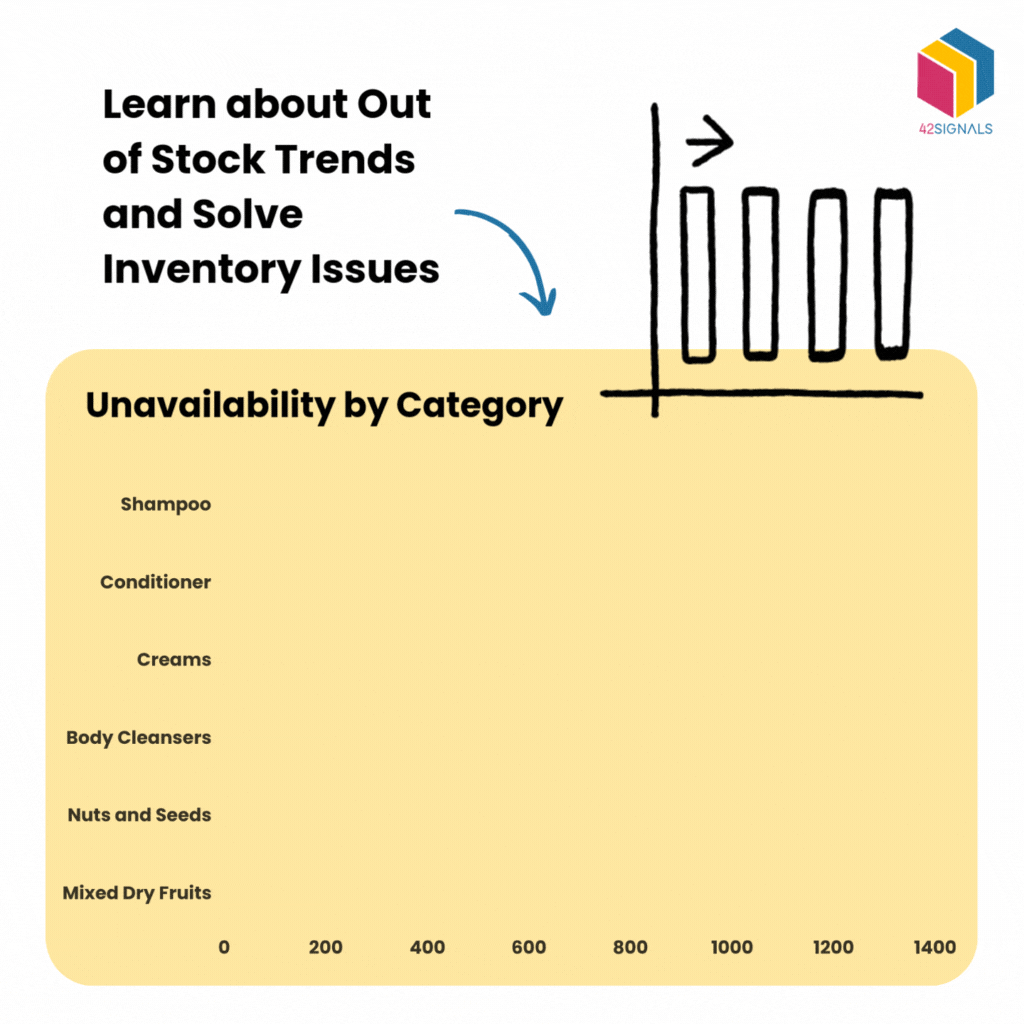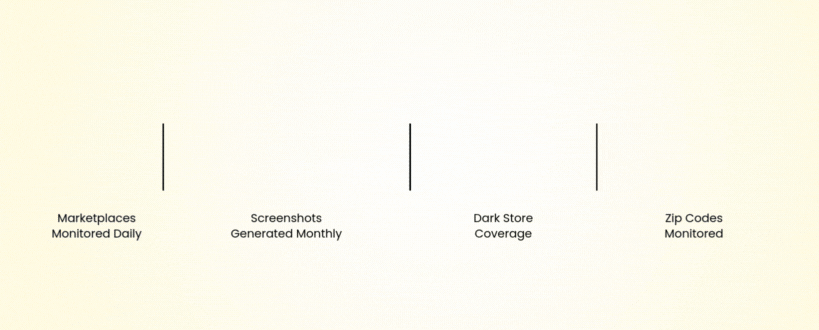Picture this: you’re browsing online for a sleek pair of wireless headphones. On Amazon, you find “Noise-Canceling Bluetooth Headphones – Midnight Black.” Later, on eBay, you stumble across “Premium Wireless Earphones (Black) – 2023 Model.” Are they the same product? To some, yes, but product matching in ecommerce can be a confusing challenge to tackle.
For retailers, it’s a logistical nightmare. This is the world of SKU chaos—a tangled mess of duplicate listings, inconsistent data, and missed opportunities. Thankfully, product matching in e-commerce is stepping in as a powerful solution.
Why SKU Chaos Happens and the Role of Product Matching in ECommerce

Image Source: Investopedia
What Is a SKU—and Why It’s Spiraling
A Stock Keeping Unit (SKU) is designed to help businesses manage inventory. But in e-commerce, where every platform has its own quirks, SKUs often spiral out of control.

Image Source: Square Up
A single product may have dozens of listings, each with slight variations in description, images, or title. Why? Sellers tweak listings to test keywords, appeal to regional preferences, or comply with platform-specific rules. The result is a bloated catalog riddled with duplicates.
The Consequences of Cluttered Catalogs
A messy product catalog isn’t just an inconvenience—it has real consequences:
- Lost Sales: Shoppers often abandon their purchase when they can’t confirm whether two listings are the same product or when comparison becomes too difficult. Confusion kills conversions.
- Operational Waste: Managing duplicate SKUs eats into team time, increases warehousing inefficiencies, and clutters backend systems. It leads to overstock, understock, and order mishandling.
- SEO Penalties: Search engines and marketplace algorithms penalize redundant listings and inconsistent metadata, pushing products lower in search results. This reduces discoverability and ultimately sales.
To tackle these challenges, forward-thinking retailers turn to product matching in ecommerce envirionments.
How Product Matching Works
The Digital Detective of E-Commerce
Product matching is the process of identifying and linking listings that refer to the same product across different platforms. Algorithms analyze a variety of data points—titles, descriptions, specifications, prices, and images—to make the connection.
For example, “Nike Air Max 2023” on Amazon might be matched with “2023 Air Max Running Shoe by Nike” on Walmart, even though the phrasing differs.
Smarter Than Just Keywords
Modern tools use machine learning (ML) and natural language processing (NLP) to understand the meaning behind descriptions. This allows the system to recognize that “4K TV” and “Ultra HD Television” refer to the same product category.
Context-aware matching with tools like 42Signals is what sets advanced systems apart. It’s no longer about string-matching—it’s about semantic understanding.

The Challenges Behind the Scenes
The “Tower of Babel” Effect
One product can be described in countless ways. A “500 mL stainless steel bottle” on one platform might be listed as a “16.9oz insulated flask” on another. Regional differences, spelling variations, and measurement units all contribute to the chaos. These inconsistencies trip up both humans and machines.
Platform-Specific Rules
Different platforms have different formatting guidelines:
- Amazon favors concise titles to improve mobile readability and keyword targeting.
- eBay encourages more detailed descriptions to help with search relevance and trust-building.
- Shopify gives full control to merchants, which often leads to wildly varying data quality across stores.
This inconsistency makes cross-platform product matching a complex puzzle that automation alone can’t always solve.
Data Gaps and Inaccuracies
Critical attributes—like brand names, dimensions, or model numbers—are often missing or misrepresented. This forces algorithms to guess, which can lead to incorrect matches or missed opportunities. In many cases, even essential identifiers like GTINs or UPCs are absent or entered incorrectly.
The Scale Problem
Manually matching SKUs isn’t sustainable. When dealing with tens or hundreds of thousands of products, automation isn’t just helpful—it’s essential. But it must be precise, or the system risks introducing false positives, which further degrade the catalog’s integrity.

Here, 42Signals helps our clients with mapping and understanding products across marketplaces to stay on top of their products as well as their competitors.
Fixing the Chaos: Strategies That Work
1. Product Data Scraping: Competitive Intelligence, On Demand
Web scraping tools like PromptCloud gather product details—titles, prices, specifications, images, and even reviews—from competitor websites or marketplaces.

- Gap-Filling: If Walmart is missing a manufacturer code, scraping Best Buy or Target can fill in the blanks and ensure product metadata is complete.
- Trend Analysis: Scraped reviews and ratings help identify how consumers perceive a product, allowing retailers to adjust descriptions, imagery, or bundle offerings.
- Competitive Monitoring: Businesses can track price changes and new releases in real-time, giving them a strategic edge.
Just note: scraping exists in a legal gray area. Many retailers opt for third-party data providers to stay compliant and avoid policy violations.
2. Catalog Enrichment: From Raw Data to Revenue
Think of catalog enrichment as polishing raw data until it shines:
- Standardization: Enrichment helps align units, format prices, correct brand names, and unify variant labels (like “Light Gray” vs. “Slate”). This consistency improves filtering, search accuracy, and the overall customer experience.
- Data Completion: Enrichment tools pull in missing details like GTINs, dimensions, and materials from global product databases or manufacturer catalogs. Complete data builds trust and boosts conversion.
- Image Optimization: Enriched catalogs often include standardized image requirements—white backgrounds, minimum resolution, consistent angles—which help listings look more professional and unified.
Brands like Samsung and Levi’s have seen up to a 30% increase in conversions through enrichment alone. Better data drives better decisions.
3. Digital Shelf Analytics: Real-Time Quality Control

Platforms like 42Signals act like watchdogs for your product listings. They monitor:
- Price Fluctuations: Identify when unauthorized resellers undercut your MSRP or when competitors launch aggressive discounts, allowing brands to respond quickly.
- Stock Levels: Track when your products—or your competitor’s—go out of stock. This helps optimize promotional timing and inventory allocation.

- Content Errors: Catch issues like missing images, misaligned descriptions, or inconsistent branding across platforms. These subtle problems can harm trust and damage brand equity.
You’ll know the moment a competitor changes their title or pricing strategy, giving you a competitive edge and allowing for fast, informed decisions.
Tips for SKU Harmony
Start Small, Scale Fast
Begin with your top-performing SKUs. These generate the most revenue and will yield quick wins when optimized. A cleaner bestseller’s catalog improves not just discoverability but customer satisfaction and repeat purchases.
Combine Logic and AI
Use rule-based logic (e.g., matching GTINs or model numbers) for the easy wins. Then layer in AI and machine learning to handle the more nuanced, context-driven cases where titles and specs vary significantly.
Keep It Fresh
Update your catalog regularly—ideally weekly. Products change, competitors adjust their listings, and seasonal trends shift. Outdated data can lead to broken experiences and lost sales.
Test and Improve
Don’t “set it and forget it.” Run A/B tests to identify weak spots in your matching logic. For instance, if “blue” and “azure” aren’t being grouped properly, refine your synonym mapping or retrain your ML model to catch that nuance.
What’s Next for Product Matching?
AI With Deeper Context Awareness
Next-gen systems will be able to parse regional dialects, shopper intent, and even cultural slang. Matching “sneakers” with “trainers” or understanding that “back-to-school laptop” means a device suitable for students is becoming the new standard.
Advanced Image Recognition
Improved visual AI will detect subtle differences in packaging or versioning, such as the presence of a “Limited Edition” label or the shift from glossy to matte finishes, making visual product matching even more accurate.
Blockchain for Product Integrity
Blockchain-based product records will offer transparent, tamper-proof logs of product specifications and history. This could help verify authenticity, resolve disputes, and reduce fraud across online marketplaces.
And as voice search grows in usage, aligning product metadata with natural language queries (“Find eco-friendly running shoes under $150”) will be critical to staying competitive.
From Chaos to Clarity with Product Matching in ECommerce
SKU chaos is more than just a data problem—it’s a threat to revenue, efficiency, and customer trust. But with the right tools and strategies—product matching, data scraping, catalog enrichment, and shelf analytics—retailers can transform chaos into competitive advantage.
In a world where 87% of shoppers begin their buying journey online, clean, consistent, and connected product data isn’t just nice to have. It’s essential.
Embrace the tech. Ditch the duplicates. And give your customers the seamless experience they expect.

42Signals can help your business do all of this with our advanced data features. Sign up for a free trial today.






